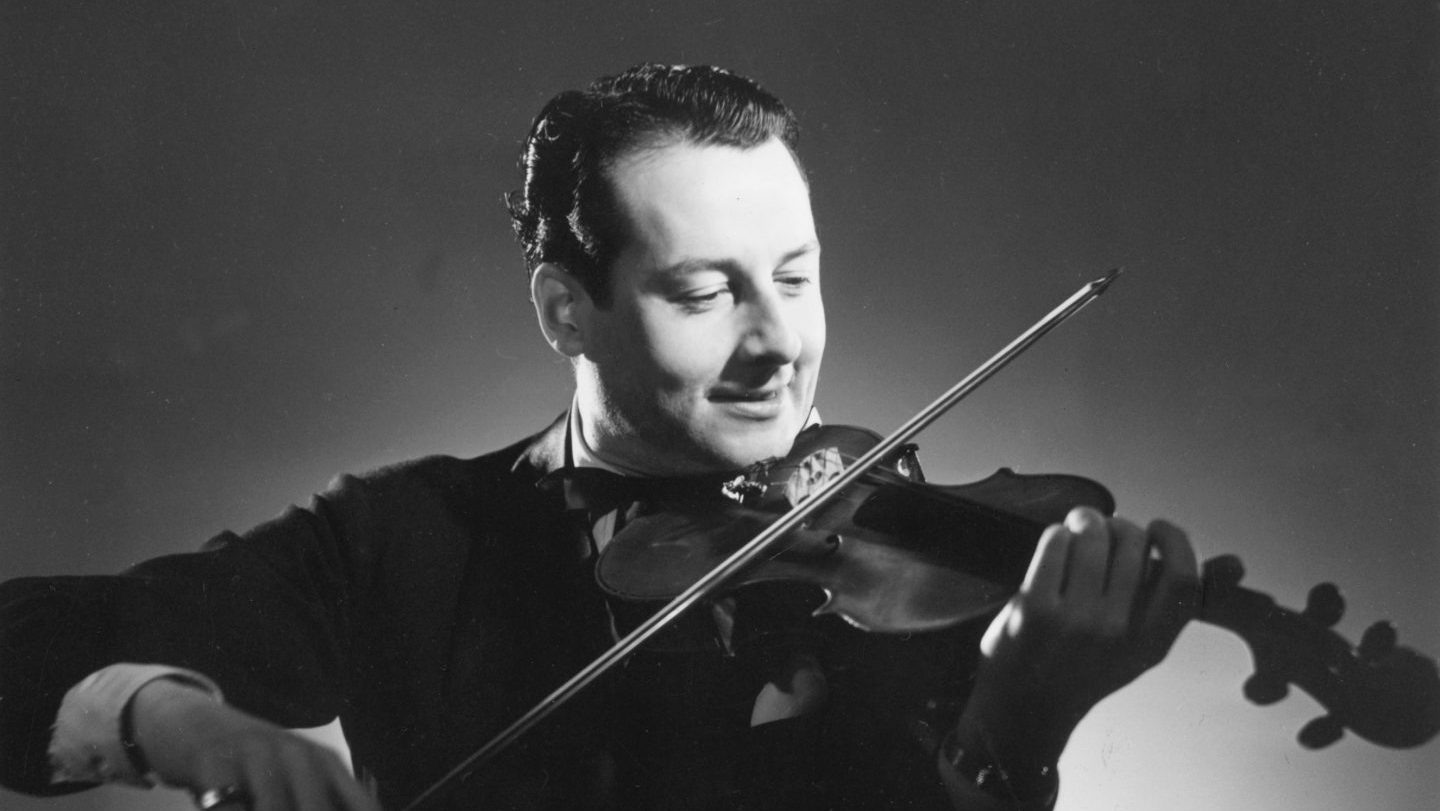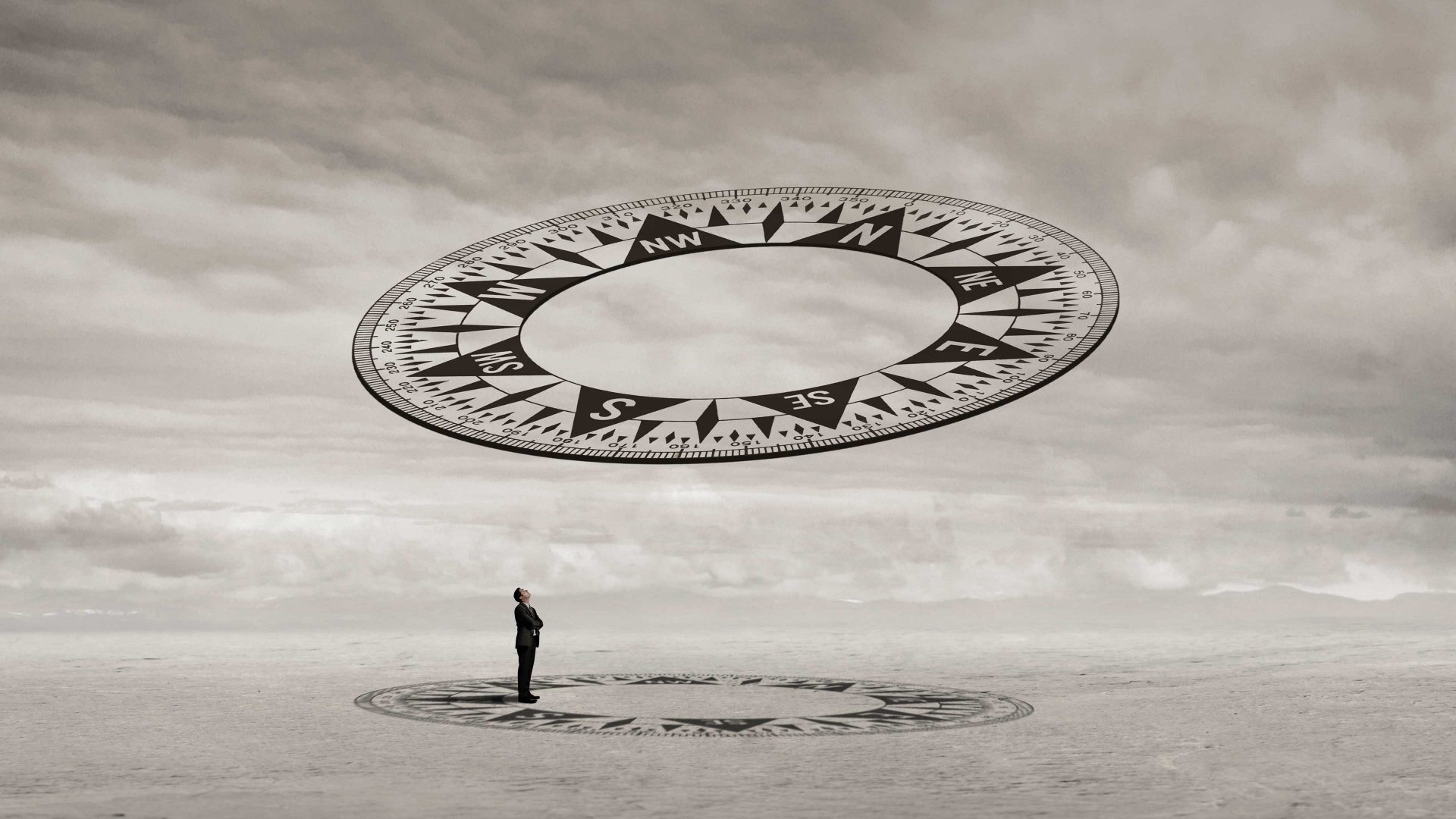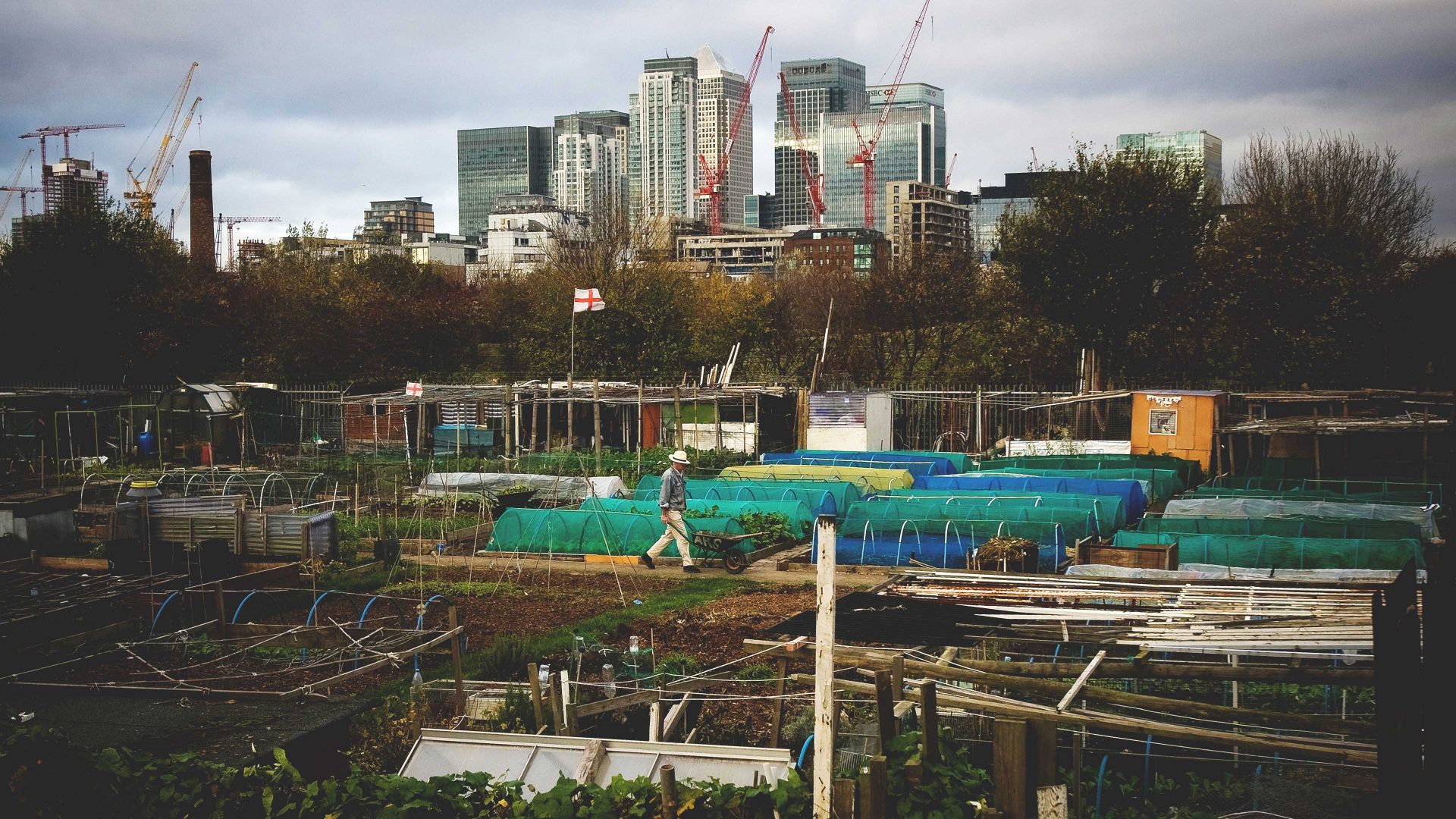The last drink-warmed stragglers were retrieving their hats and coats and preparing to head out into the chilly Paris night when, at the side of the stage, a shadow loomed over Stéphane Grappelli. It was the winter of 1931 and the 23-year-old had just closed the clasps on his violin case, his fingertips still hot and thrumming from hours of playing for the dancers at the Le Croix du Sud in Montparnasse. He had one arm in his overcoat while the last tune of the night replayed in his head when the man appeared at his shoulder.
Grappelli recognised Django Reinhardt immediately. They were only on nodding terms but the violinist had heard good things about this extraordinary jazz guitar player emerging on the Paris scene. There was some story about a caravan fire a couple of years earlier, he thought, a couple of fingers lost, something that would have finished most musicians. Yet he had turned it into a virtue, developing his own unique style that impressed even seasoned players on the circuit.
The two men exchanged greetings then Reinhardt, never a man for small talk, got straight to the point.
“Listen,” he said, “I’m looking for a violinist who can play hot.”
On this occasion the conversation would be brief, yet it would change the face of jazz in Europe forever, even if it would take two years for the busy musicians to sit down together with their instruments.
In the summer of 1933, Grappelli was playing a late afternoon set with Gregor and the Gregorians at the Hotel Claridge in Paris when Reinhardt arrived to perform with a different band that night.
“So, there are two bands and Django is playing rhythm guitar in the other one,” Grappelli recalled in 1977. “Between sets, after I’ve fixed a new string on my violin and am testing it, Django is there and starts to play along with me. It goes very well. ‘Hey, tomorrow we do it again’ he said.”
Before long their sessions were joined first by Reinhardt’s guitarist brother Joseph, then another guitarist, Roger Chaput, and double bass player Louis Vola, leading to an offer of a gig by the Hot Club de France, a gathering of French jazz enthusiasts who put on concerts in Paris. The Quintette du Hot Club de France was born.
With Grappelli and Reinhardt as its musical axis the band became pioneers of gypsy jazz, playing for hours most nights of the week and in the years leading up to the second world war, releasing a string of recordings that spread their thrilling sound across Europe and beyond. The combination of Grappelli’s simple melodies, around which he would base remarkably inventive improvisations, and Reinhardt’s intuitive accompaniments and melodic inventions that matched the violinist’s work perfectly, formed one of the greatest collaborations in the history of jazz.
“Django was a philharmonic orchestra all on his own,” Grappelli said of his musical partner.
Creative flowerings like that between Grappelli and Reinhardt are rare, a combination of the right people in the right situation at exactly the right time. And timing is everything. If Reinhardt had gone to another club the night he heard Grappelli play, or if the Gregorians had not been booked into the same venue as Reinhardt’s band, the story of Grappelli and of jazz itself might have been very different.
When he met Reinhardt, Grappelli was already carving out a reputation as a formidable musician, a tireless player working his way up from practically nothing. Paris-born, he lost his mother when barely a toddler, leaving him with a grieving Italian father, a translator who struggled to look after himself let alone a small boy.
Conscripted into the Italian army at the outbreak of the first world war, Ernesto Grappelli turned to a friend for help – the dancer Isadora Duncan. Six-year-old Stéphane was placed in her care and enrolled at her dance school until Duncan, alarmed by the war, decamped to the US. Grappelli spent the rest of the war in an orphanage he would later describe as “Dickensian”, but the memory of his time with Duncan sustained him, not least the music by which he had been constantly surrounded.
On returning from the war, Ernesto Grappelli recognised his son’s love of music and pawned a suit to buy his first violin. The boy displayed so much talent he won a place at the Paris Conservatoire, graduating at 15 in 1923 and landing a job in the orchestra pit of a Paris cinema, accompanying silent films for six hours every day.
“That is where I really learned to play the fiddle,” he said.
Grappelli would spend breaks between screenings at a nearby brasserie where in his late teens a primitive jukebox stacked with American 78s introduced him to jazz, setting the musical course that would define his life.
“In France they didn’t like jazz much,” he recalled of early attempts to convince club and bar owners that this new sound was the future.
Finding the piano a more marketable – and lucrative – instrument, Grappelli established himself as a jazz player at the keyboard with the Gregorians until bandleader Gregor persuaded him to try the fiddle again, with extraordinary results. Shortly afterwards, Reinhardt walked into La Croix du Sud.
The combination of Reinhardt’s sudden death in 1953 and the rise of bebop kept Grappelli out of the limelight for a few years, but he was always working, always gigging, always with an empty chair next to him on the stage as a tribute to the absent guitarist. He was still getting better too, finding new ways to explore melody and rhythm, fulfilled creatively by exploring his talent in ways that would pay off in an extraordinary second act to his career.
New collaborators in the early 1970s prompted astonishing global fame. A stunning set at the Newport Jazz Festival in 1973 led to a triumphant show at Carnegie Hall the following year, but it was his extensive work with the classical virtuoso Yehudi Menuhin that truly defined his creative resurgence.
“I know of no other violinist with that extraordinary command of improvising in the jazz medium,” said Menuhin. “It is like the juggler who throws his pots and plates to the wind and yet retrieves them every time.”
For Grappelli, it all came down to the music itself.
“Without jazz, I couldn’t live,” he said a few months before his death. “Every day I thank God for putting on earth this music which I love so much.”




